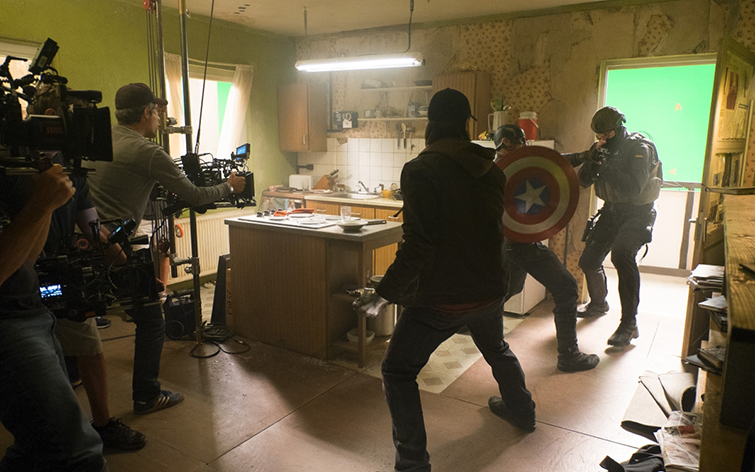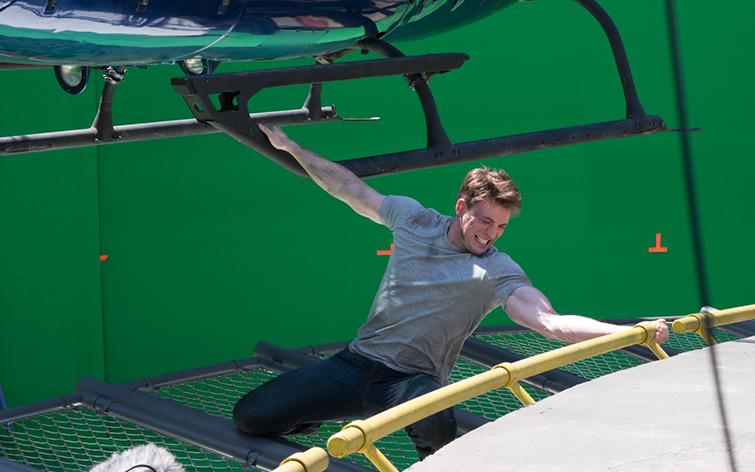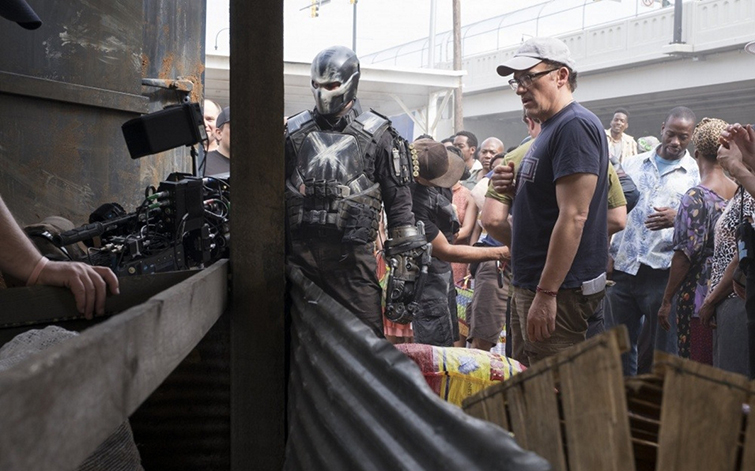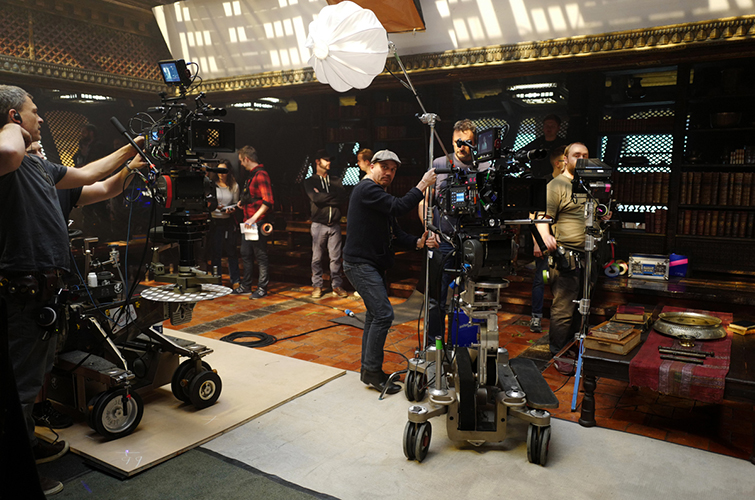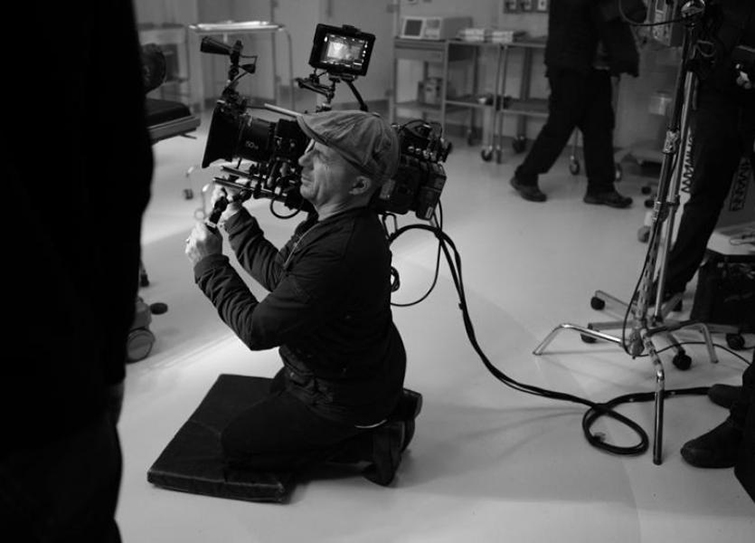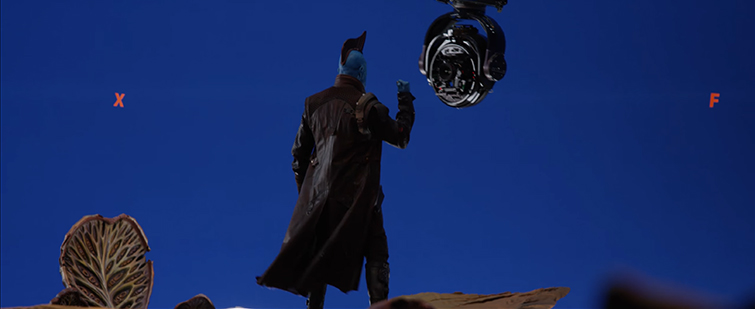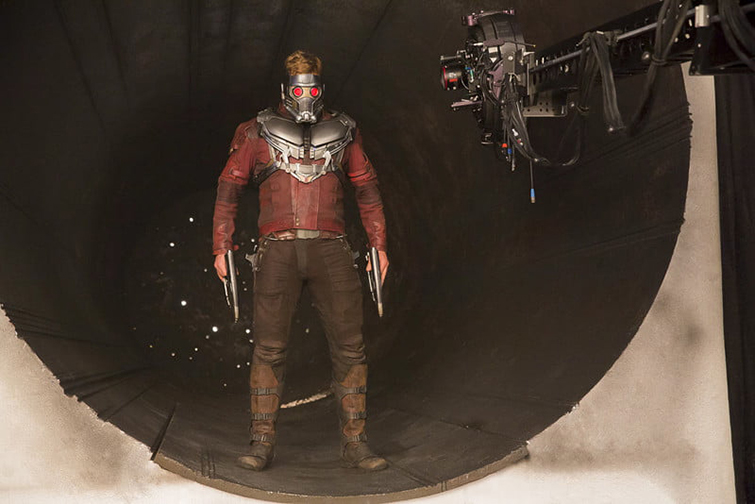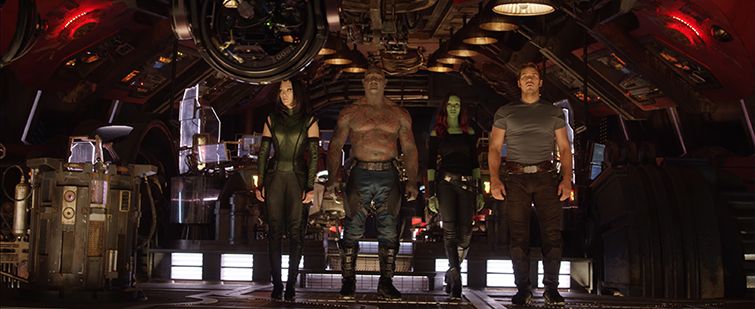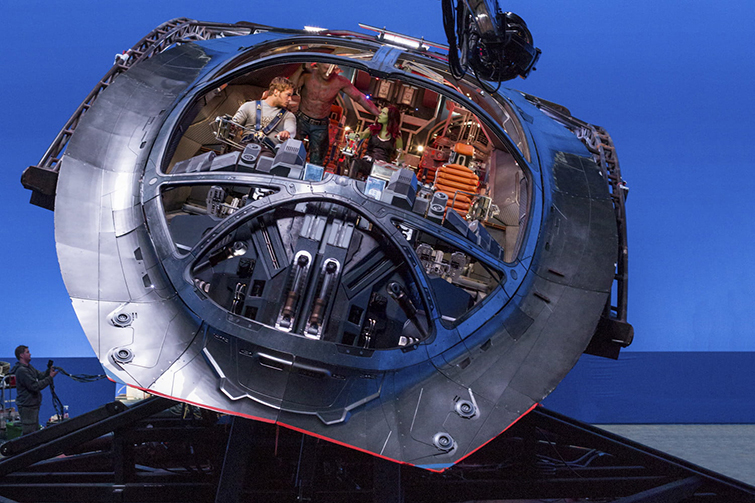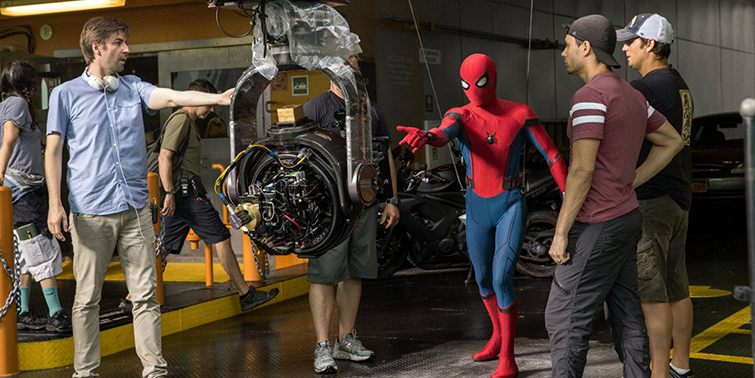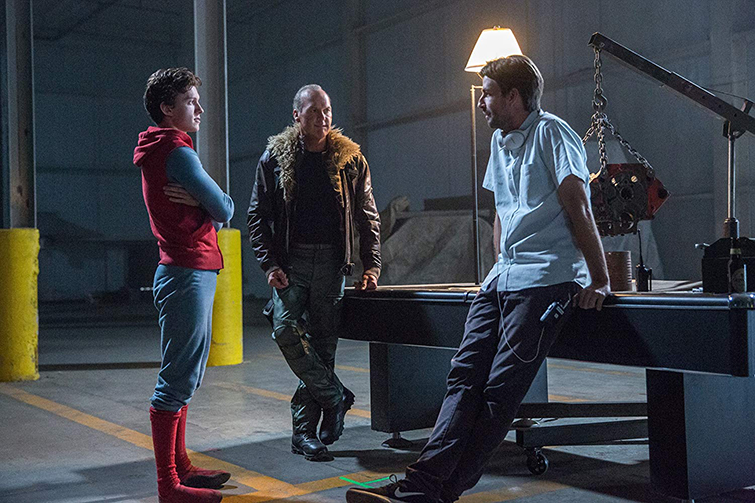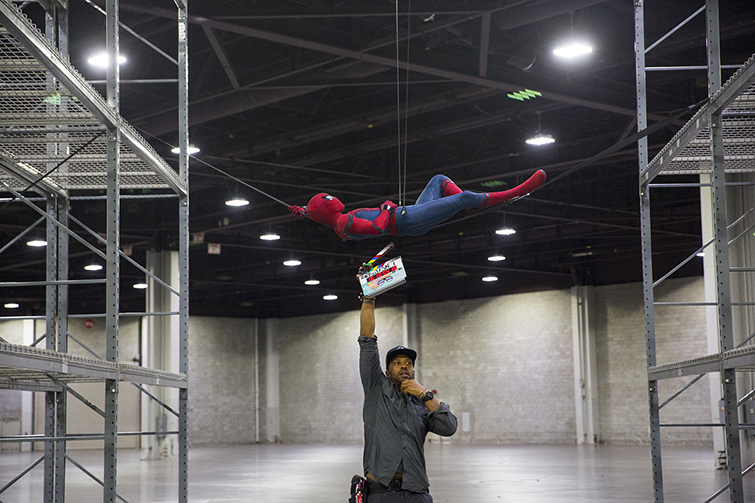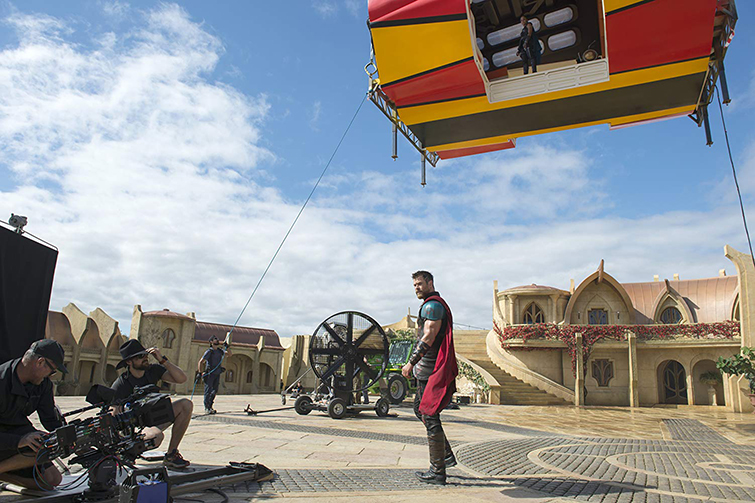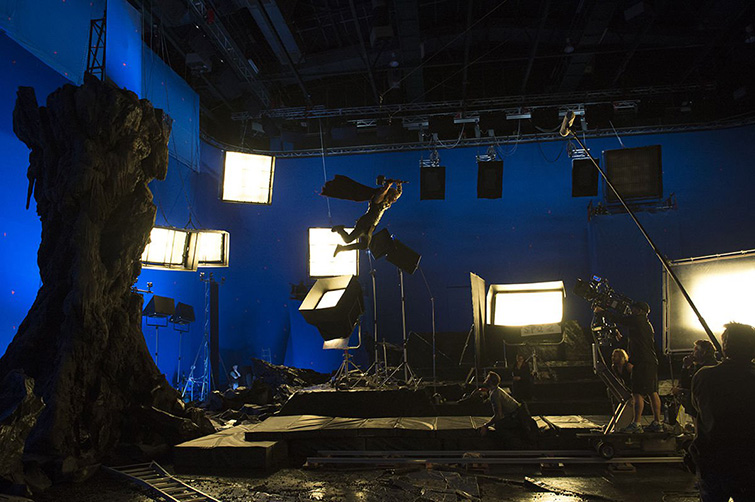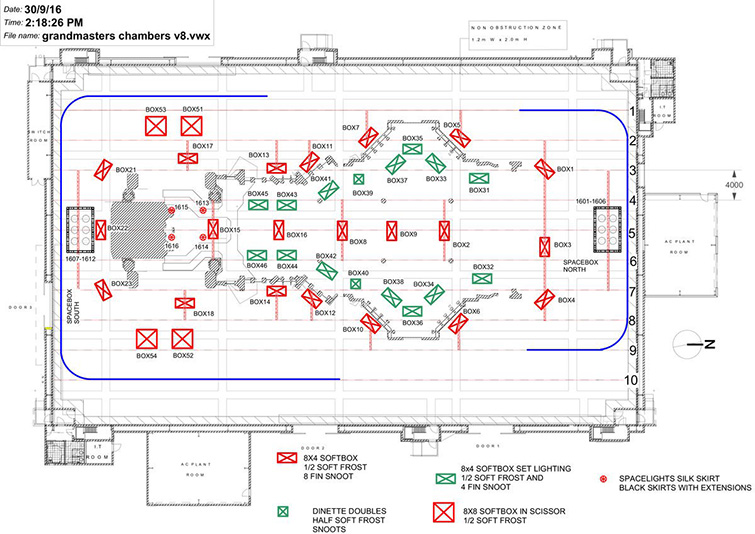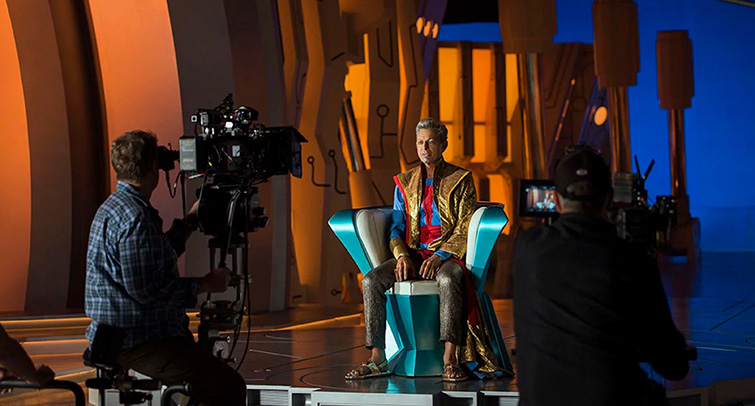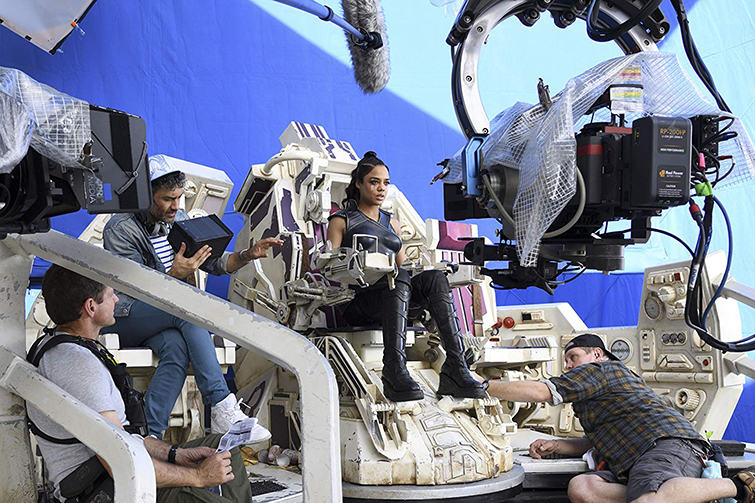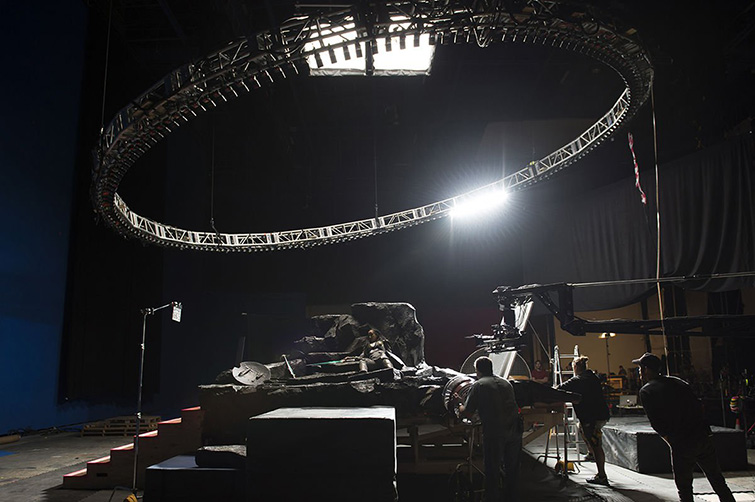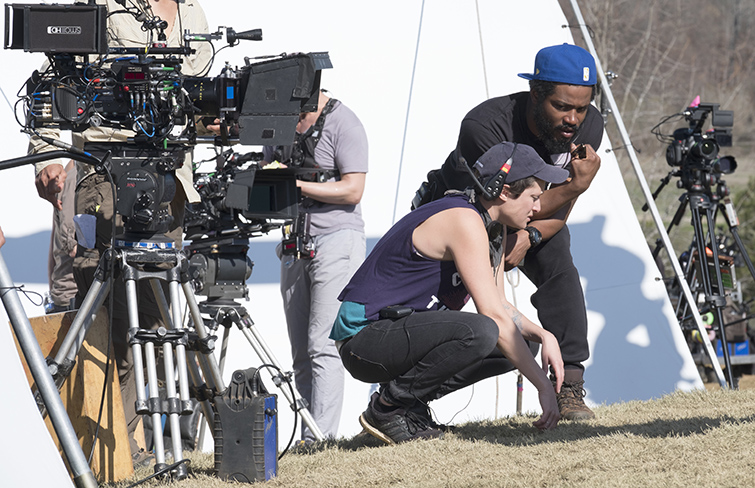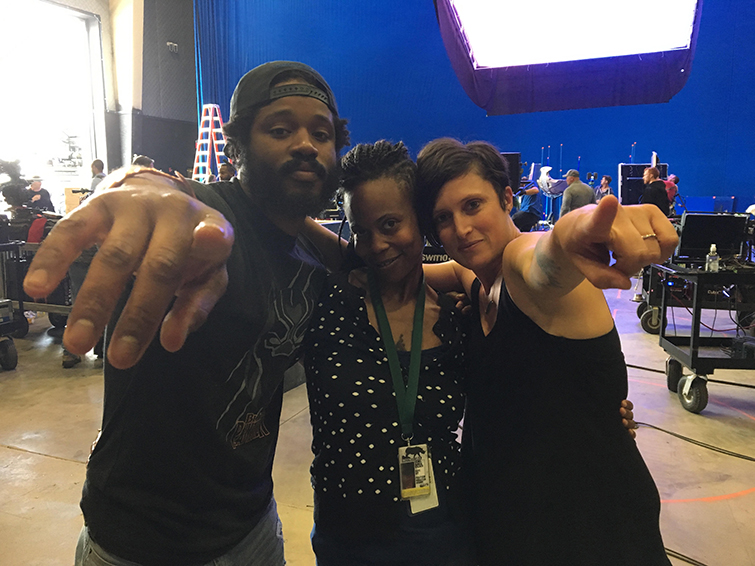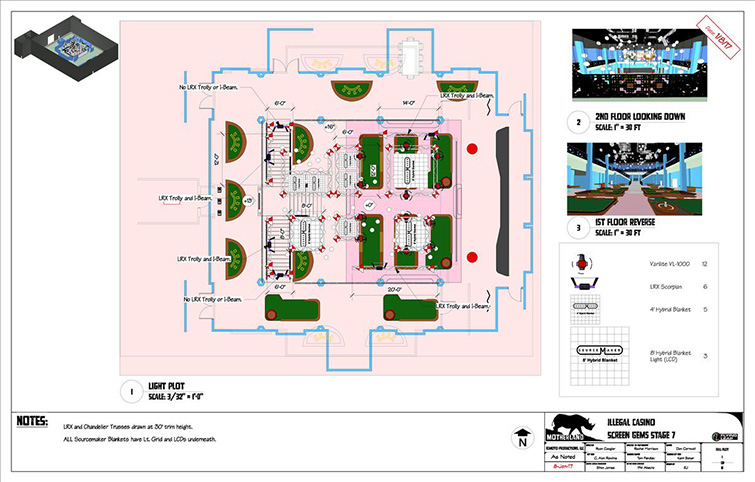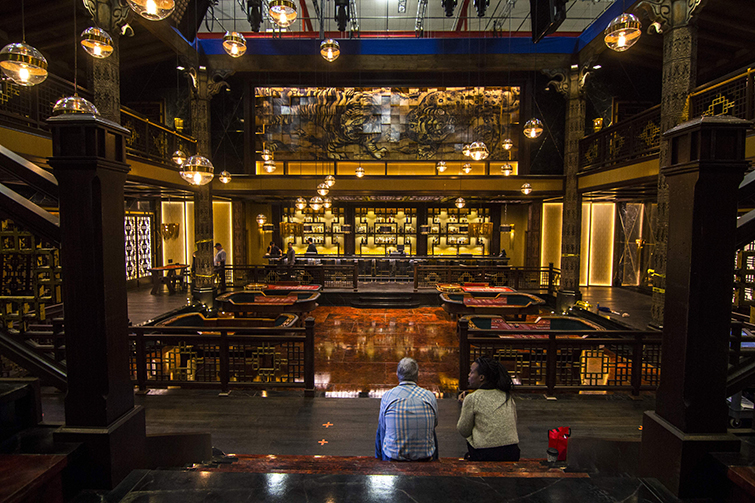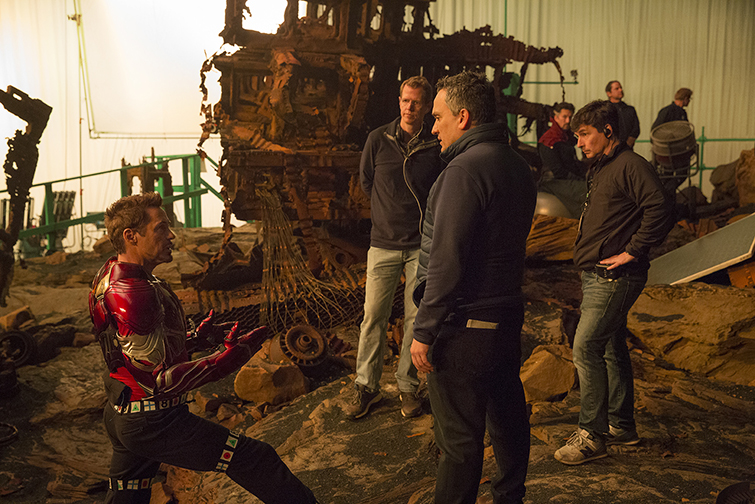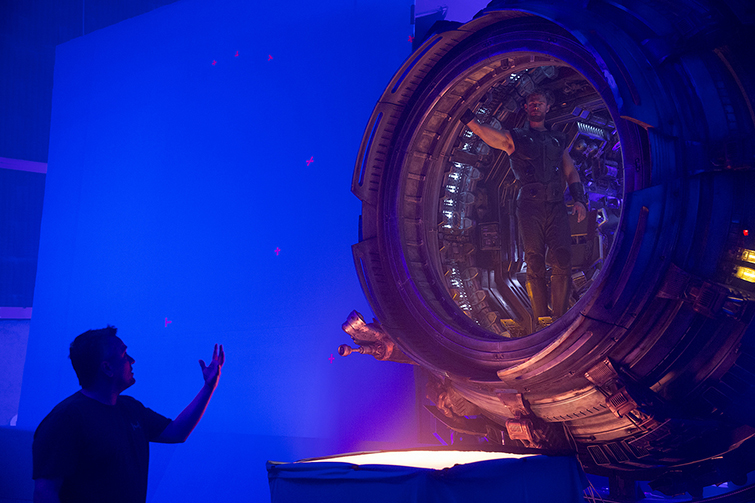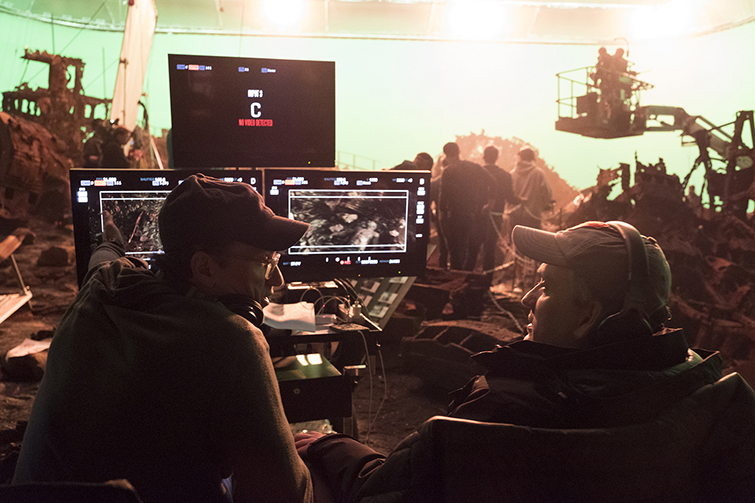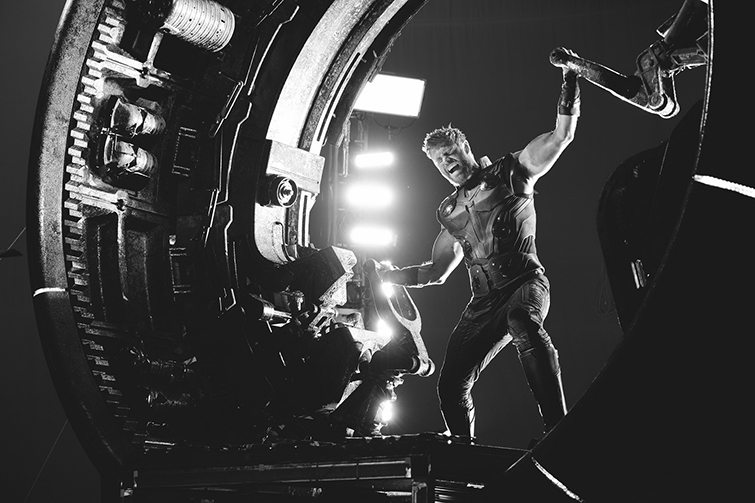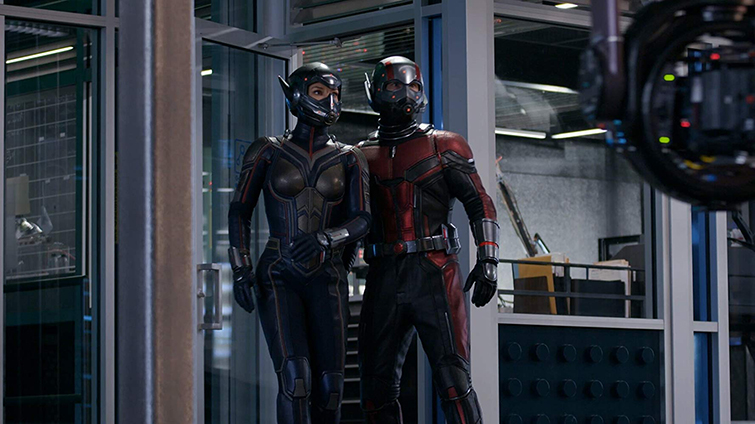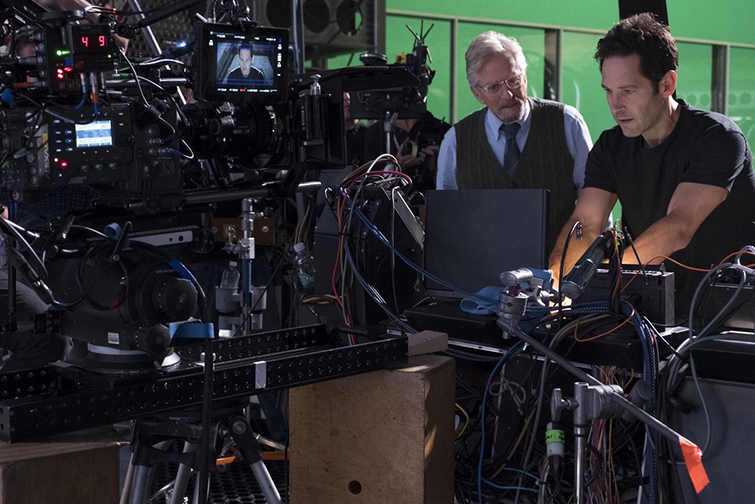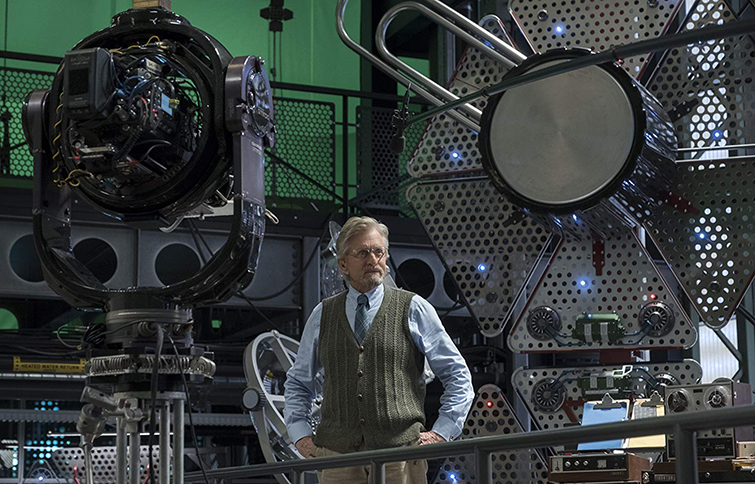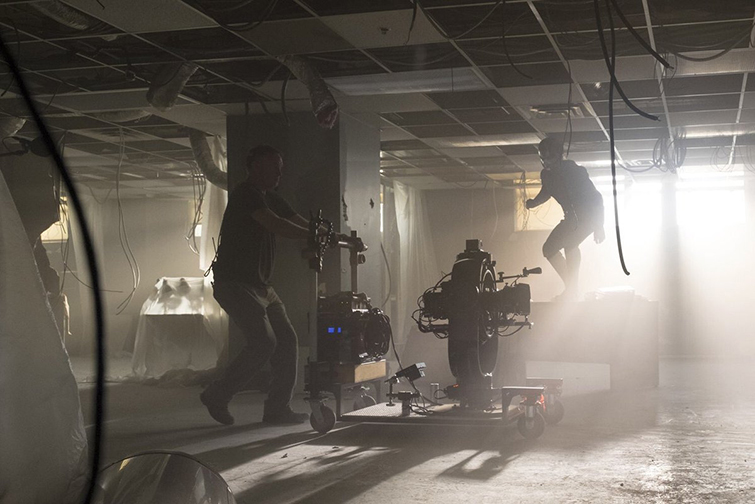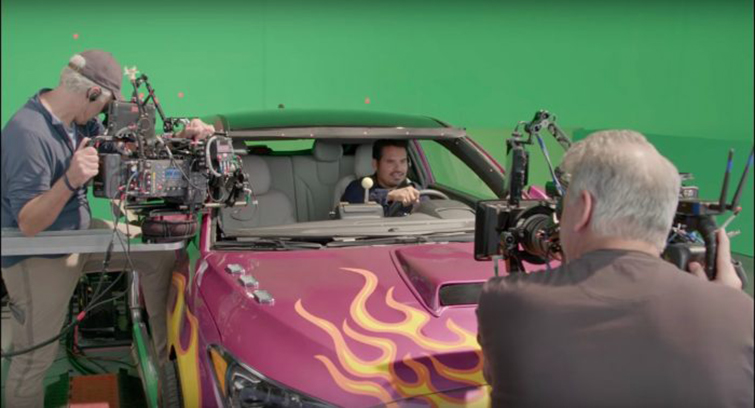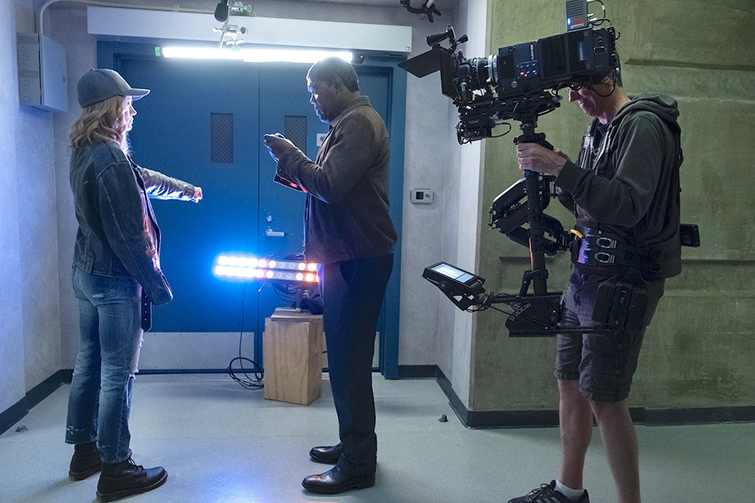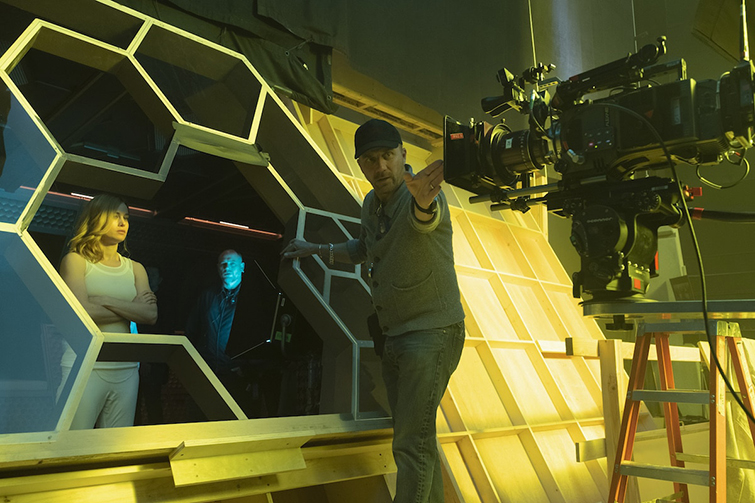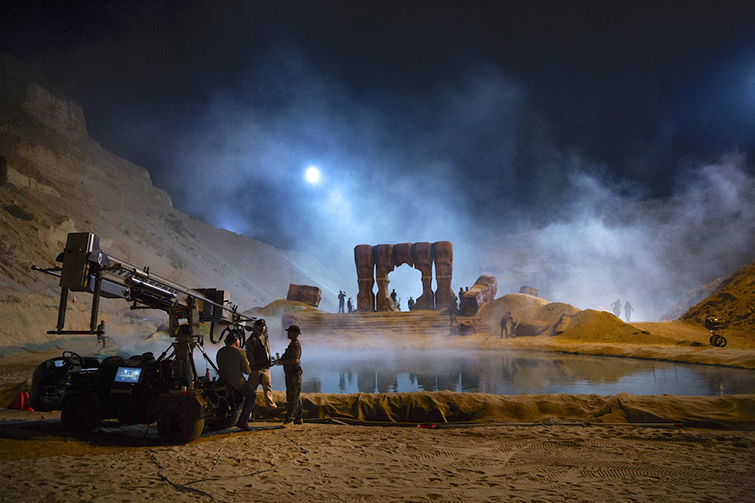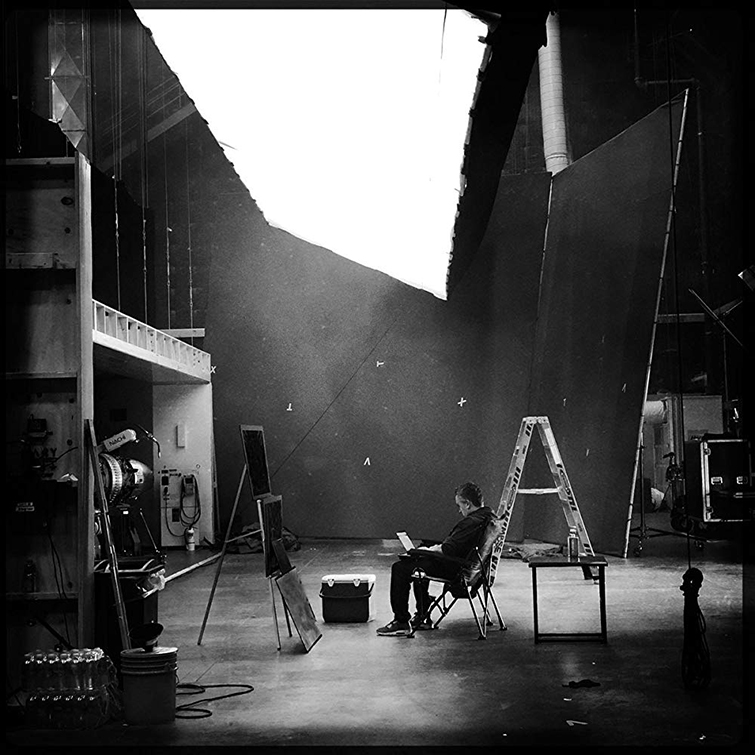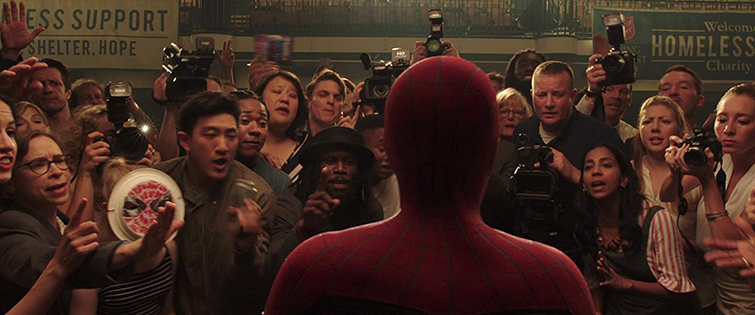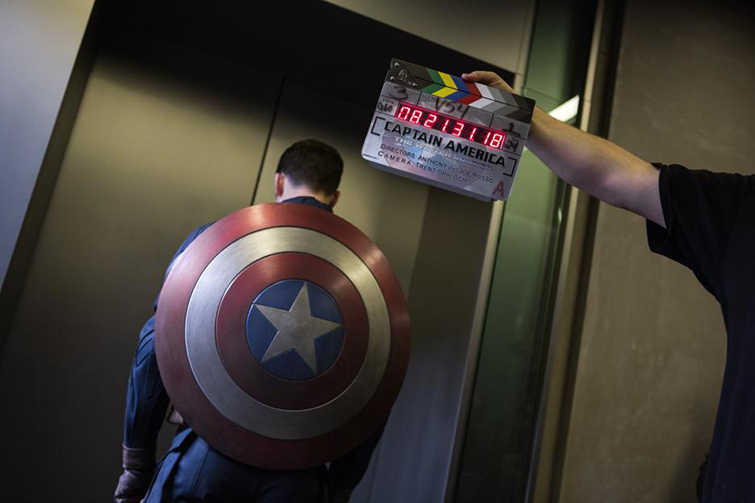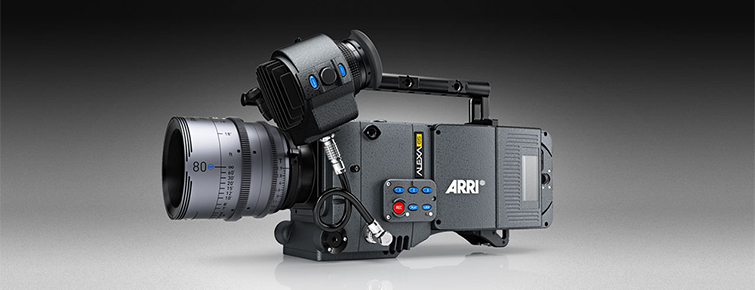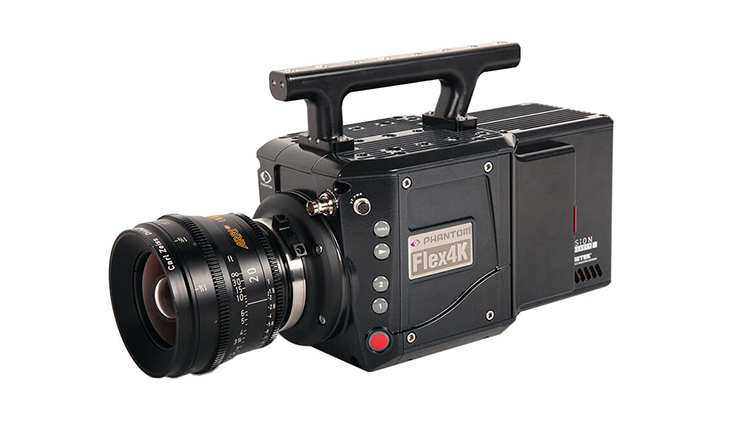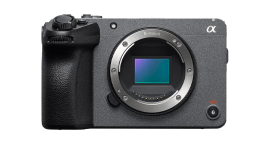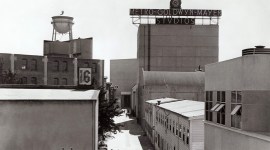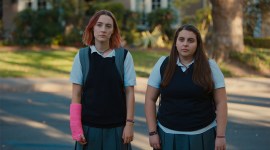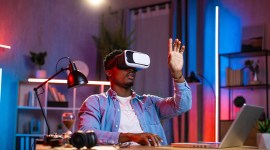
The Cameras and Lenses Behind the Marvel Cinematic Universe — Phase Three
Dynamic lighting. Explosive energy. Here are the most popular cameras used throughout the entire Phase Three Marvel Cinematic Universe.
It’s all been building to this. The culmination of over a decade of Marvel films. I was curious to know which camera was used most throughout the entirety of the Marvel Cinematic Universe (MCU), so I dove into each of the films to find out.
We’ve covered the MCU cameras used in Phase One and Phase Two. Now let’s canvass the cameras and gear used to shoot the many massive blockbuster films in Phase Three (2016-2019): from Captain America: Civil War to Spider-Man: Far From Home.
MCU Phase Three: “Where did that bring you? Back to me.”
Captain America: Civil War
Directors: Anthony Russo, Joe Russo
Director of Photography: Trent Opaloch
US Release: May 2016
Camera Package:
- ARRI Alexa 65 IMAX (airport and additional scenes)
- ARRI Alexa XT Plus
- GoPro Hero 4 Black
- Red Epic Dragon
- Lenses
- Panavision C-, E-, G-, T-Series, ATZ and AWZ2
- Hasselblad Prime 65
In a piece on Talking with Mark Toffolo, DP Trent Opaloch speaks about the large international scale of the film,
We were also very fortunate to work with a great German crew in Berlin that made our transition over there very smooth.
There were a ton of actors on this film and that was actually quite challenging — to shoot them all with their crazy schedules. The tough thing is that you can end up shooting someone’s close up in another country, weeks after you’ve shot the other side of the conversation, so it’s always a challenge dealing with changing weather conditions, etc. to maintain some cohesiveness to the scene.
I’m starting up prep on the new Infinity Wars films that we’re shooting back to back with the Russo’s later this year, and the scale of those two films combined is a bit mind blowing, so it’s good that these last two films have ramped up in terms of scale and complexity, because each one prepares you for the next.
As for the epic airport showdown shot at both the backlot at Pinewood Atlanta Studios and Germany’s Leipzig/Halle Airport, Opaloch told The Hollywood Reporter,
We shut down one terminal and we had a little postage stamp of tarmac that we could shoot on … We had to go through security after breakfast and at lunchtime. All of the equipment had to be ferried in beforehand, and it was gone over with dogs and inspectors. So we had to make sure we had everything we needed because once you started shooting, you couldn’t just reach into the truck and pull out something from the other side.
Opaloch went on to say about the ARRI Alexa 65,
There was an idea late in pre-production to shoot Civil War entirely with the Alexa 65, but we were so close to our start date and it was such a large-scale undertaking, [so we decided] to use it for this key sequence, and use it as the testing ground for Avengers: Infinity War Parts 1 and 2, which will be shot completely with those cameras.
Additionally, key grip Michael Coo developed a bungee rig system; Mark Goellnicht, our ‘A’ camera operator, used a similar system on Mad Max: Fury Road … Basically, it’s a long bungee tube attached to a rope that will run up 30 or 40 feet — we suspend that line over the set. It allows the operators to get very dynamic and right in there with the action. It feels like handheld but they don’t have the brunt of the weight of the camera.
We are still catching up on lens options. I’m having weekly conversations with the guy at ARRI … There’s a mad push to get them ready for Infinity Wars. As it stands, we are meant to have 12 Alexa 65 cameras for those films, since we are shooting them back to back, and we’ll need all the accessories and lenses. [When we get the script] we’ll break down logistically how we’ll tackle this, with how many cameras and units. It’s such a behemoth of a project.
Doctor Strange
Director: Scott Derrickson
Director of Photography: Ben Davis
US Release: November 2016
Camera Package:
- ARRI Alexa 65
- ARRI Alexa Mini
- ARRI Alexa XT Plus
- ARRIFLEX 235
- Panavision Panaflex Millennium XL2
- Phantom Flex4K
- Lenses
- Panavision System 65 and Primo 70 Lenses
- ARRI’s certified 765
In a conversation with British Cinematographer, Ben Davis spoke about the new (at the time) ARRI Alexa 65,
There was a lot of new technology just coming onto the market at the time – the first of the large format digital cameras, with their new back-end workflow systems, plus a host of interactive LED lighting equipment – and I was eager to see how I could get the best from them.
The resolution of the Alexa 65, using my preferred lenses for wide shots and the IMAX deliverable, was beyond question and, to my pleasant surprise, the face became a landscape too. What’s more, I found I would be able to balance the lighting and exposure to get gorgeous depth-of-field, do lovely focus pulls, and ultimately have a lot of control over my shots – whilst avoiding giving our first ACs a complete nightmare on-set.
As for the incredibly unique look of the film,
It was of its own, about magic more than anything else, with visuals that we have not seen before in a movie. It had to be original, yet also be respectful to the original comics, which were ‘out there’ and pretty psychedelic in places.
So I wanted to find a way to take the look, energy, and dynamism of the original artwork onto the big screen. Perhaps my most important conversations with my director Scott, revolved around the challenges of dealing with, and delivering, the alternate dimensions-in-parallel, which feature in the story, and translating these to the big screen. Along with shooting live action, this was also going to be a VFX-heavy production.
Davis often compared Doctor Strange to Marvel’s version of Fantasia, “because it’s so sort of out there and different to everything else that they’ve done.”
Want to create a Doctor Strange-style shield in After Effects? Check out this classic PremiumBeat tutorial.
Guardians of the Galaxy Vol. 2
Director: James Gunn
Director of Photography: Henry Braham
US Release: May 2017
Camera Package:
- RED WEAPON DRAGON VistaVision 8K
- Phantom Flex 4K
- Lenses
- Panavision Primo 70
- Leica Summicron-C Lenses
DP Henry Braham spoke with Digital Trends about the decision to shoot on RED,
There was interest in shooting the movie on 65mm because of the richness of the image and the intensity of the image, and the fact that so much of it would work well on an IMAX screen. With that amount of detail and color and richness to the image, you really see the quality of it. With the existing technology for 65mm, there are some beautiful cameras out there but they’re very big, so one of the things that worried me about that was the physicality of the camera.
I was looking for something that could handle the large format but still be very intimate and physically small. That’s why I went to see Jarred Land at the Red Camera Company. I was talking to him about it and he kind of reached out and put a black box on the table and said, “Well, how about looking at this?” This was their new high-resolution 8K camera, which is a VistaVision camera and it was in a prototype form, but the idea of it seemed perfect for Guardians Vol. 2.
It provided this very high-resolution image to start with, but in a camera body that was pretty much the size of [the famed hand-held camera] a Hasselblad. What it enabled me to do was to mount the camera on a new form of stabilization head that could be handheld and was designed by a guy who used to work on torpedo guidance systems.
The small body also allowed for quick setups and a documentary style approach. Braham went on to say,
What it does is enable the camera to flow and explore scenes as the actors explored scenes with James, and the camera could just be there with them. And quite often, we wouldn’t even rehearse scenes. We’d just go straight into filming them, because we knew they’d develop. I think that shows in the movie. In the movie, there’s a lot of spontaneity in the performances. That’s a credit to James and the cast working together, and to the ability to get the camera in there with them, with a small footprint, and capture those moments.
As for the most challenging sequences to shoot, Braham told Vulture about the film’s opening baby Groot dance number,
At one point, we were going to film it all as one shot on one camera. And that would have been entirely feasible, particularly because of this gyro-stabilized camera that we developed for the movie. You then break it down into the elements that are 100 percent live-action, the elements that we need to fit in with animation. I forget, but there’s a lot of live-action footage within that. And it may be me saying, “The animation starts here, but then it gets taken over by the camera at this point, and then we hand it back over to the animators at this point.” But in almost every part of that scene, there’ll be live-action footage. That’s why you build a set for everybody to be on, which is a very big set, actually.
As for the space chase sequences,
When we’re photographing the actors inside the spaceship — their movement and what’s going on — the interactive light that’s lighting them needs to reflect what’s happening on the outside. We need to have decided what’s happening on the outside before we film on the inside, so that the interaction of all the lights makes the shot believable. For instance, I would use a lot of very large-scale video-projection screens, a little bit like what you would use in a rock concert or a big football game. But I would have very large blankets of them with animated light going across them, which provides a very believable light source for all the interactive light that might be going on around the spaceship, at that time. If the spaceship is rolling, then the light needs to roll too, on the actors.
You can actually catch a glimpse of this rig in action in this behind-the-scenes presentation from RED.
As for the most difficult scene, that comes down to the film’s finale and funeral.
Often, the toughest things are the things that, if they’re done well, you don’t notice at all. We shot the scene in the set, and we’d all moved back into a completely different studio. We made a big move. And Chris and James came in the next morning and said, “You know what, we’ve had a better idea how to do this.” James and Chris wanted to play that scene with a different tone to it. That’s the beauty of filmmaking, that you can have a better idea overnight or you can learn something. What we had to do was take him as a single element and match him into that scene absolutely perfectly.
Thankfully, you would never know when you looked at the movie, but actually it’s incredibly difficult to do. Because you obviously need to match up the lighting exactly, you need to match the way the camera moves, you need to match the timing of the camera moves to the speech. It’s very intricate, and at the same time you need to give Chris, the actor, space to act. And it’s a very difficult scene to act. On one hand, it’s very intricate and technical, and on the other hand, the last thing you want is the actors to know that’s the case. Because you don’t want to distract from what they’re doing. So that’s a good example of something that you wouldn’t think is anything other than just a normal shot, but actually it’s very, very complicated to do.
Spider-Man: Homecoming
Director: Jon Watts
Director of Photography: Salvatore Totino
US Release: July 2017
Camera Package:
- ARRI Alexa Mini
- ARRI Alexa XT Plus
- Lenses
- Cooke S4/i
- Angenieux Optimo
Spider-Man: Homecoming takes dozens of cues from the John Hughes films of the 1980s. As such, director Jon Watts really wanted to get the homage just right, especially when it came to shooting on set and VFX sequences. He tells IndieWire,
I got in there with a virtual camera in Maya and designed the sequences like they felt part of the film … and then I made them, even though they were made by thousands of collaborators.
Want to make your own Spider-Man: Homecoming VFX? Check out this Spider-Man-inspired tutorial with free HUD elements.
Thor: Ragnarok
Director: Taika Waititi
Director of Photography: Javier Aguirresarobe
US Release: November 2017
Camera Package:
- ARRI Alexa 65
- Phantom Flex4K
- Lenses
- Hasselblad Prime 65 Lenses
- Zeiss 765 Lenses
Thor: Ragnarok is easily one of the most colorful Marvel films to date.
DP Javier Aguirresarobe brought a ton of colorful light to the Thor films, as seen here is the lighting diagrams for the Grandmaster’s chambers.
And here is a glimpse of that set in action.
Head over to American Cinematographer for more diagrams and photos.
Thor: Ragnarok even used a Dynamic Light system from SatelliteLab, combined with a robotic camera arm from Motorized Precision, to shoot select sequences with Valkyrie and Hela. In an interview with SyFy, Carlo Van de Roer talks about shooting with Dynamic Light,
I wanted to move light sources so fast that the rest of the world would appear standing still, giving us the ability to move light sources within a world suspended in time.
The speed and acceleration of the light sources are controlled with software so that the motion in the scene and the motion of the light sources can be adjusted as independent variables
VFX Supervisor Jake Morrison went on to say,
The software that they’ve written effectively synchronizes each flash to a single frame of action, with a high-speed Phantom camera … We shot with a Phantom Flex4K at about 1000 frames a second, and what happens is you get this moment where time slows down to an incredible soup. You get into really thick, slo-mo action, but then, almost impossibly, the light actually does a full 360 degree loop around the actors, in that moment.
For more on Thor, check out these pieces:
- How the Team Behind Thor: Ragnarok Crafted an Epic Action Film
- Marvel’s Movie Poster Renaissance + Free Movie Poster Template
- Create a Glow Warp Title Transition Inspired by Marvel’s Thor: Ragnarok
Black Panther
Director: Ryan Coogler
Director of Photography: Rachel Morrison
US Release: February 2018
Camera Package:
- ARRI Alexa XT Plus
- ARRI Alexa Mini
- Panavision Primo and Primo V Lenses
In a conversation with the ASC, cinematographer Rachel Morrison talks about her research into the MCU, which involved talking to previously mentioned DPs — Bed Davis and Trent Opaloch. Morrison said,
One of the things I figured out quickly is that no two large-scale movies are the same, and no two visual-effects-heavy films are the same … Within the visual-effects world, Marvel does things very differently than DC or Lucasfilm.
As for choosing the ARRI Alexa XT over the Alexa 65,
One of the reasons we went with the XT’s Open Gate sensor over the Alexa 65 was that Ryan wanted things to be in-focus in the background … Not Citizen Kane deep, but his perspective was that our sense of scale came from being able to see all the beautiful sets and costumes.
As for those amazing sets, PremiumBeat previously chatted with Oscar-winning Black Panther production designer Hannah Beachler. In that conversation, we learned about the underground casino.
Korea was awesome. I love South Korea so much. It was another culture-rich tradition, so a lot of that trip was learning about their history.
We were in the fish market, and that’s where we started with the idea of the casino. Off of that was a place called Gangster Alley, which is where all the ships were.
It was sort of the harbor, and it helped give us an international feel, to bring in a very traditional side of what South Korea is. And then, we also have the very beautiful side of South Korea, with what we all know with the vertical signs and lit-up signs.
If you are enjoying these set photos, also be sure to check out our interview with Marvel Set Photographer Matt Kennedy here.
Avengers: Infinity War
Directors: Anthony Russo, Joe Russo
Director of Photography: Trent Opaloch
US Release: April 2018
Camera Package:
- ARRI Alexa 65 IMAX
- Lenses
- Panavision Sphero 65
- APO Panatar
Avengers: Infinity War claims to be the first Hollywood feature to be shot entirely in IMAX. In a release from IMAX,
The move, by directors Joe Russo and Anthony Russo, marks the first time a Hollywood feature film will be shot only using IMAX cameras and its exclusive aspect ratio. The IMAX/ARRI 2D digital camera, which stops short of a full IMAX 3D camera rig, is a customized large format version of ARRI’s 6K Alexa 65 camera.
In another release, this one from ARRI, it’s further explained,
Up until now, the ALEXA IMAX camera has tended to be used for selected sequences that would benefit from exceptional image quality, but Avengers: Infinity War represents the first film to be shot with it entirely. Directors Joe and Anthony Russo, with cinematographer Trent Opaloch, utilized up to 12 ALEXA IMAX cameras, during peak shooting periods, to capture the superhero ensemble — an unprecedented assembly of Marvel characters. The 65mm format will provide audiences with a fittingly cinematic spectacle, for a film that marks the 10-year anniversary of the Marvel Cinematic Universe.
As for the practical reasons in making this decision, co-director Joe Russo tells CinemaBlend,
We have a lot of characters who are tall, unnaturally tall. So it really helps with the frame, because that IMAX aspect ratio works for those types of characters, and the landscapes are stunning. There are some really exotic landscapes in the film, and to be able to put those on an IMAX screen, it’s an incredible tool to have as a filmmaker, to be able to exploit that scale of aspect ratio.
Until this saga concludes, the Infinity War crew has been working away on the closure to this epic, so there is still much secrecy to the behind the scenes. Perhaps we’ll know even more in the coming months.
Ant-Man and the Wasp
Director: Peyton Reed
Director of Photography: Dante Spinotti
US Release: July 2018
Camera Package:
- ARRI Alexa 65
- ARRI Alexa Mini
- ARRI Alexa SXT
- Panavision Millennium DXL
- Red Epic Dragon (visual effects)
- Lenses
- ARRI Prime DNA
Peter Rosenfeld shared in his piece on the Society of Camera Operators,
About a year or so before principal photography began, Peyton called me to get my thoughts on large format photography with the Alexa 65 system. At that time, I was shooting Bright with DP Roman Vasyanov. We were using the Alexa 65 system and Ultra Panavision 70 Anamorphic lenses. Roman crafted incredible images on that picture.
Putting aside the many aesthetic reasons, I told him that there are a great many benefits that come with the increased sensor size. There was the luxury of reserving an area outside of the theatrical release, for visual effects. A big consideration for a movie like this. There would also be a need to extract an IMAX (1.9:1) format from the sensor area. Lastly, the greater resolution would allow flexibility for reframing in post.
“Can we shoot an action movie with this format?” Reed asked me. “Sure,” I responded. However, as an operator, I know that Peyton is fond of complex Steadicam master shots, and his frames are often very specific. This would not be Bright, where a looser more frenetic camera style was part of the aesthetic. I proposed using an Alexa SXT for the Steadicam work and he agreed. When Dante Spinotti, ASC, was signed on, he instantly became enamored of the Alexa 65 and the beautiful images he could craft with it. The die was cast.
For Ant-Man and the Wasp, Dante and Peyton decided on the Alexa 65 in Open Gate mode, shooting at a resolution of 6.5K (6560 x 3100), and scaling at 87%.
The Alexa SXT was also set to Open Gate mode with a resolution of 3.4K (3424 x 2202), and scaling at 95%.
Captain Marvel
Directors: Anna Boden, Ryan Fleck
Director of Photography: Ben Davis
US Release: March 2019
Camera Package:
- ARRI Alexa 65
- Panavision Millennium DXL
- RED Weapon 8K VV Monstro
- Blackmagic Micro Cinema Camera
- Lenses
- Panavision Sphero 65
- Custom rehoused Canon K35s
Talking with ICG Magazine, DP Ben Davis talked about lensing the film,
Much of the work is very intimate, and the choice of lens was key because the camera is either following her, or leading her, into these new environments. When Brie’s character arrives on Earth, it can’t be that you’re already there and watch her arrive. You have to go along with her, in order to feel the emotional arc she travels.
As for the many cameras used,
The large-format ARRI Alexa 65 was the primary capture device, though some scenes utilized Panavision DXL2s, which cut well with RED WEAPON VV Monstro units, used in tight spaces.
[For go-cart flashbacks with the Blackmagic Micros] it used to be that the quality drop was significant with small units, but these GoPro-sized systems are very high quality … You can put really good lenses on them and set shutter and iris appropriately.
Avengers: Endgame
Directors: Anthony Russo, Joe Russo
Director of Photography: Trent Opaloch
US Release: April 2019
Camera Package:
- ARRI Alexa 65 IMAX
- Lenses
- Panavision Sphero 65
- APO Panatar
Same setup from Avengers: Infinity War as these two films were shot simultaneously. No other details to share at this time.
Spider-Man: Far From Home
Director: Jon Watts
Director of Photography: Matthew J. Lloyd
US Release: July 2019
Camera Package:
- ARRI Alexa
- Lenses
- Hawk V-Lite Anamorphic
Producer Kevin Feige has confirmed that Far From Home will conclude Phase Three, and not be the first film in Phase Four. Again, not much to report here. The production supposedly used the Alexa, but no details on which model.
MCU Most Used Cameras
So, now that we’ve covered the first three phases of the Marvel Cinematic Universe, which cameras were used the most on these 24 films? I’m going to break this into two categories — principal photography and additional photography.
Keep in mind, these are the cameras we were able to confirm, and there are likely more used for VFX and additional sequences. But knowing what we do know as confirmed, let’s see what we learned.
It should be no surprise that ARRI cameras are the go-to for principal photography. Guardians of the Galaxy Vol 2. is the only MCU film not shot on an ARRI camera.
Most Popular MCU Cameras by Manufacturer:
- ARRI (23 Films)
- Panavision (8 Films)
- Phantom (8 Films)
- RED (7 Films)
- Canon (7 Films)
- Photosonics (2 Films)
- Blackmagic (2 Films)
- GoPro (2 Films)
Top 5 MCU Cameras for Principal Photography:
- ARRI Alexa 65 (7 Films)
- ARRI Alexa XT (7 Films)
- Panavision Panaflex Millenium XL (6 Films)
- ARRI Arriflex 435 (5 Films)
- ARRI Arriflex 235 (4 Films)
Top 5 MCU Cameras for Additional Photography:
- Phantom Flex (8 Films)
- RED Epic/Weapon (7 Films)
- ARRI Alexa Mini (5 Films)
- Canon 5D (5 Films)
- Photosonics 4ER (2 Films)
This concludes the Marvel Cinematic Universe. For previous Phases and camera insight, check out our first two articles:
- The Cameras and Lenses Behind the Marvel Cinematic Universe: Phase One
- The Cameras and Lenses Behind the Marvel Cinematic Universe: Phase Two
Looking for more articles on the film and video industry? Check these out.


